Unfortunately, my allergies have begun to spoil my fun. Constant sneezing not only bothers me but also scares the bejeebers out of all the creatures, ruining any chance of sneaking up and snapping a few photographs. Since I was a kid, I've always been told my hay fever is due to goldenrod. I was brought up to despise the yellow blossoms decorating the roadside and was often reminded to avoid them at all costs.
I'm not the only one who suffers from a chronic case of misinformation. Goldenrod has been blamed for autumn allergies for generations. When in reality, it's just an innocent bystander. The real culprit is ragweed (Ambrosia spp) hiding in plain sight amongst the goldenrod that causes congestion and headaches. Wind picks up the lightweight pollen grains from the weed's small green spikes and spreads them everywhere.
Goldenrods, members of the genus Solidago, produce pollen that is too heavy for wind pollination and can only be manually transported by insects and animals. Some, like Tall Goldenrod (Solidago altissima), grow up to 6 feet tall, while others, like Bluestem Goldenrod (S. caesia) grow to only 2 feet. Some species like wet sites, while others prefer dry, well-drained soils. A few species prefer shady understory habitats, but most prefer mostly direct sunlight. While we usually associate goldenrod flowers with fall, a few species bloom in the spring. (Clemson University College of Agriculture)
Goldenrod Comes to the Rescue
National Geographic's book, Herbal: 100 Herbs From the World's Healing Traditions, states that this perennial's blossoms can help alleviate seasonal irritations.
According to their research, goldenrod helps clear up the runny, weepy, or watery symptoms associated with all kinds of allergic reactions. "Taken as a tonic over time, goldenrod can remarkably boost resistance to allergens by strengthening the integrity of leaky mucus membranes. The gentle astringency of a tea or tincture made from the flowering tops dries up the drippiness of colds and flu while also eliciting a gentle sweat that can cool down a fever."
Of course, Native Americans knew about the medicinal qualities of goldenrod long before the information was published in a book. These indigenous people cooked the leaves and flowers of their "Sun Medicine" and put the concoction directly on cuts and wounds to promote faster healing. They also made tea from the leaves to ease stomach cramps. The scientific name for goldenrod became solidago due to its long tradition as a healing plant. Solidago means "to make whole" in Latin.
A Resource for Insects, Birds, and Small Animals
Not only is this plant good for what ails humans, but other creatures benefit from it, too. It's one of nature's most valuable late summer/autumn plants. University of Delaware entomologist Doug Tallamy says, "It's one of the best herbaceous native perennials for attracting and feeding wildlife."
At least 100 species of this wildflower are native to North America. This keystone plant provides food and habitat for many pollinating insects, from butterflies and moths to honeybees and native bees to wasps, ants, flies, and beetles. Its long stems offer a nesting place for insects to lay their eggs. Birds take advantage of the flowers' seeds, and along with small animals, may nest in large stands of the goldenrod.
If goldenrod was removed from the ecosystem, it would be an environmental disaster. So, the next time someone complains about the yellow blooms making them sneeze, be sure to correct them.
Research the native species for your area and add solidago to your planting list for next year. There can never be too much of this super wildflower. Here are some of the species of goldenrod I've found around here in my local area of northeastern SC.
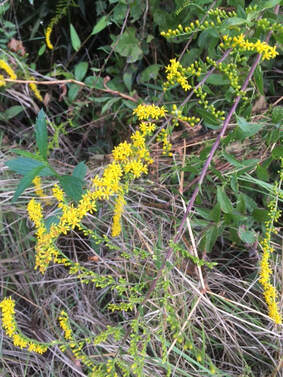
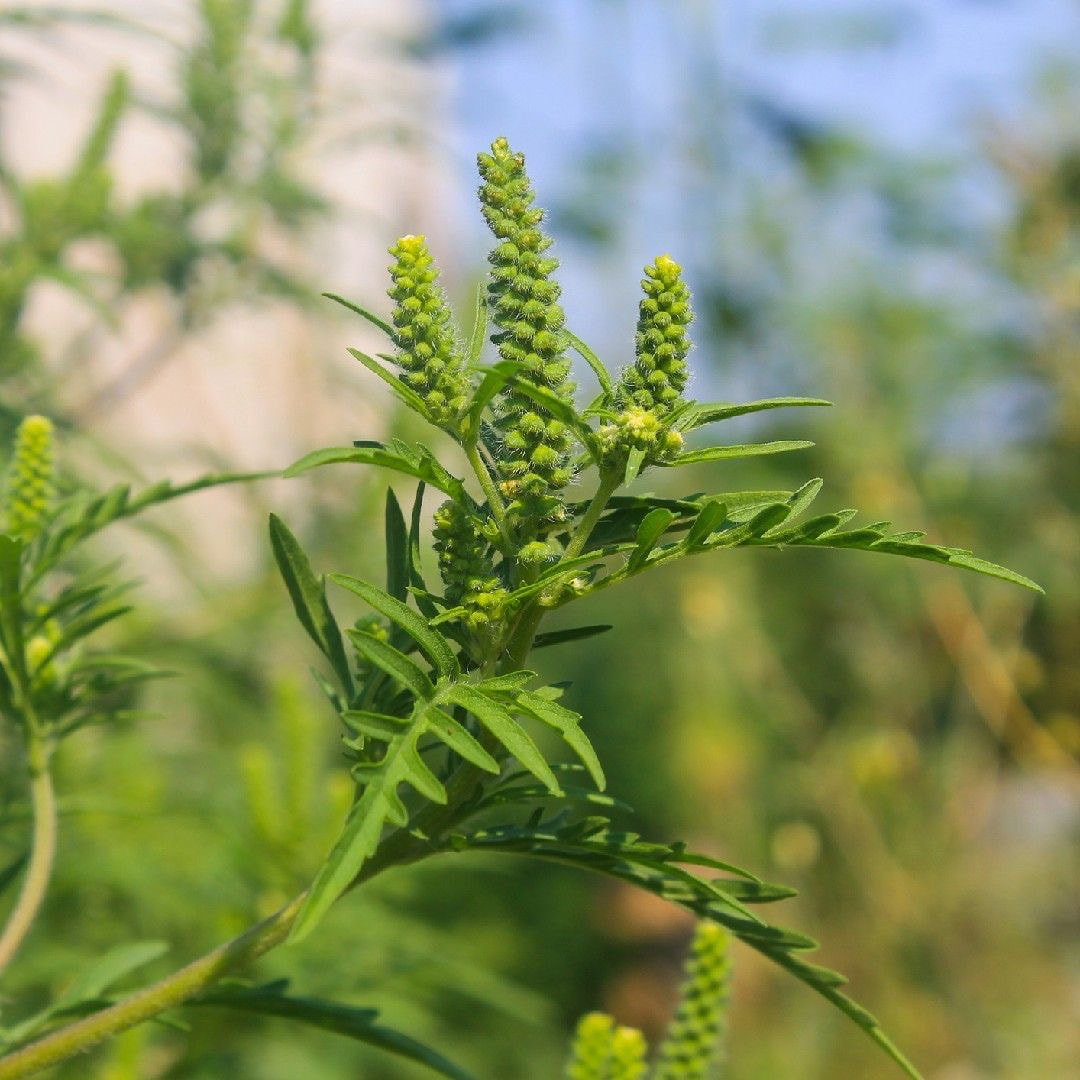
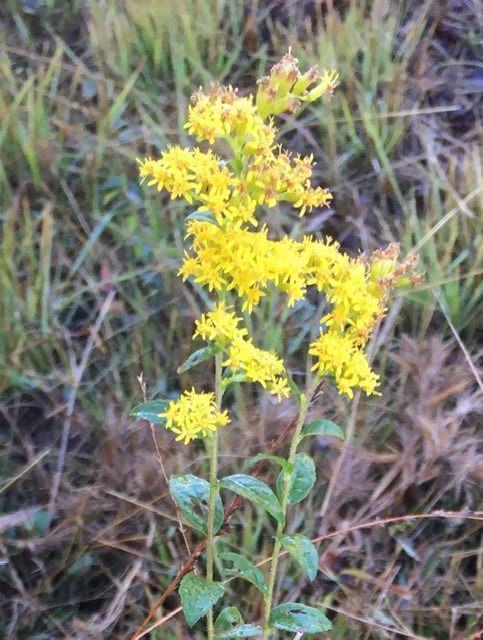
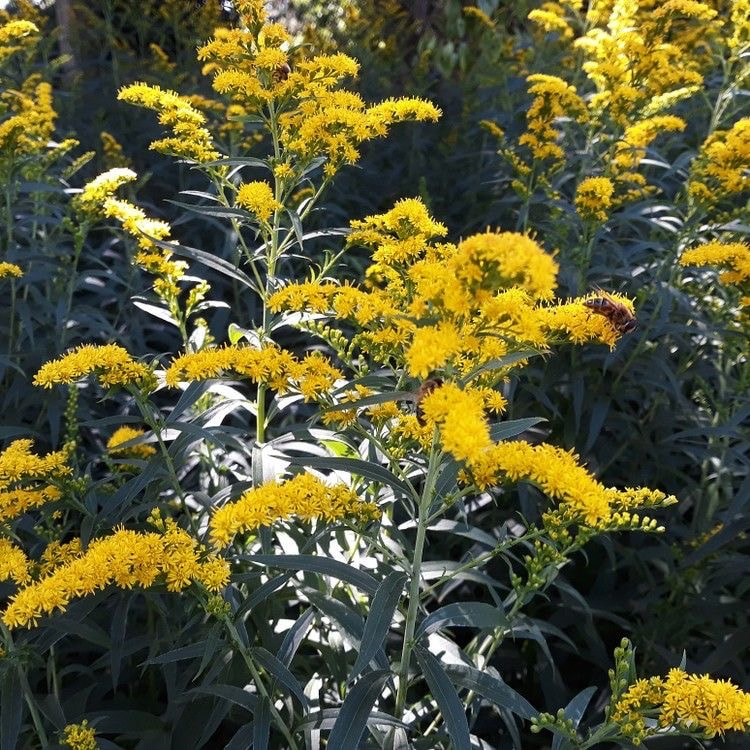

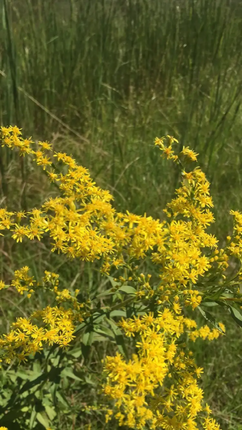
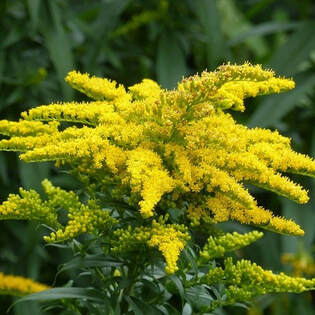
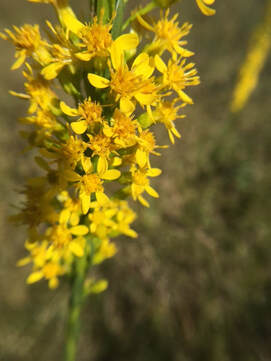
 RSS Feed
RSS Feed
